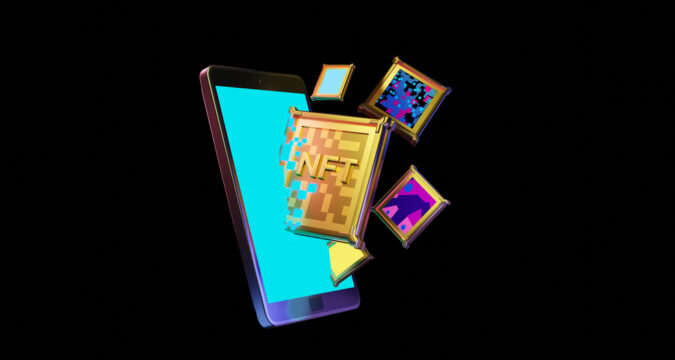
What is Crypto Art?
Cryptocurrency art is a term that encompasses a list of various items, services, and products. In general, the term can be applied to define all forms of art based on blockchain technology.
It is a type of derivative branch of the blockchain sector that is inclusive of NFTs, music albums, paintings, awards, and a wide array of artwork within the scope of the sector. Crypto art is often hosted on blockchain networks in the form of non-fungible tokens or NFTs.
NFTs have a designated monetary value based on the evaluation from art experts and enthusiasts. In the same manner as traditional artwork, the value of crypto art is directly related to the credibility of the publisher, rarity, demand, and trending status.
In the form of a collectible, NFTs and other forms of crypto art can receive authentication from public nodes to confirm ownership status and authenticity. In this manner, every artistic rendition is unique and holds a monetary value.
Introduction to Crypto Artists
As mentioned before, crypto art are digital entities that are any form of art such as music, paintings, or videos that are hosted on blockchains. However, it is important to note that crypto art is created by crypto artists.
The artists may decide to convert their work in the form of an NFT to make it immutable and ensure that they are able to earn direct revenue through its sales. At the same time, NFTs allow the original artists to claim legal ownership of their work.
Artists can access various types of software, algorithms, and programs to generate new types of crypto art in the form of different media formats such as Mp4, mp3, 3D images, JPEG, and others. The next step put the artwork on a blockchain network or protocol.
Among other formats, artists may use NFTs to ensure the authenticity of the artwork and upload it at various trading platforms and digital art galleries. Crypto art is subjected to copyright laws and artists who create original art are more likely to gain popularity within the subsector.
What is the Metaverse?
Metaverse is a concept introduced by Neal Stephenson in his 1992 novel Snow Crash. This novel sketched a fully immersive virtual world with avatars and 3D digital models among other unique themes. Metaverse is the supposed next step in the evolution of crypto art and NFTs.
This stage will allow every human user to access different types of digital avatars to log-in to a virtual world that is also based on customizable and theme-centric NFTs or crypto art pieces.
The Metaverse will be highly customizable and interactive and allow users to make smallest changes such as shoe designs, hair styles, and other minute details. At the same time, Metaverse is going to be an interactive and 3-dimensional form of internet where users will be able to interact with each other directly using log-in equipment such as VR gears and controllers.
At the same time, Metaverse may contain various public and private section that entertain users based on their clearance level.
Additionally, this forum will leverage blockchain in every aspect such as for digital trades and gaming. Metaverse is going to be especially interesting for gamers who would be able to make open-world games based on blockchain ecosystem. Metaverse gaming projects may incentives players to participate by incorporating play-to-earn or participate-to-earn models etc.
Non-Fungible Tokens (NFTs)
Non-fungible tokens (NFTs) are a type of digital currencies that allow users to preserve artwork in them. NFTs are unique by design therefore they are able to hold artwork in various forms such as videos, 3D images, and JPEG etc.
Another important aspect of NFTs is that they contain metadata that brings more value and individual propriety features on a public blockchain.
In this manner, this type of platform has endless possibilities that become accessible to a vast array of people using digitization. Right now, NFTs are utilized in different Metaverses to represent real-world objects within this ecosystem that is based on blockchain technology.
Various social media platforms and merchandisers have already started to present different types of virtual reality features such as apparel, real estate, fashion, and other types of merchandise.
Conclusion
Crypto art harbors various advantages such as granting more autonomy to artists and allowing buyers to unlock unique features. On the other hand, investors should be aware of risks such as speculative value and fluctuation in demand, etc.




